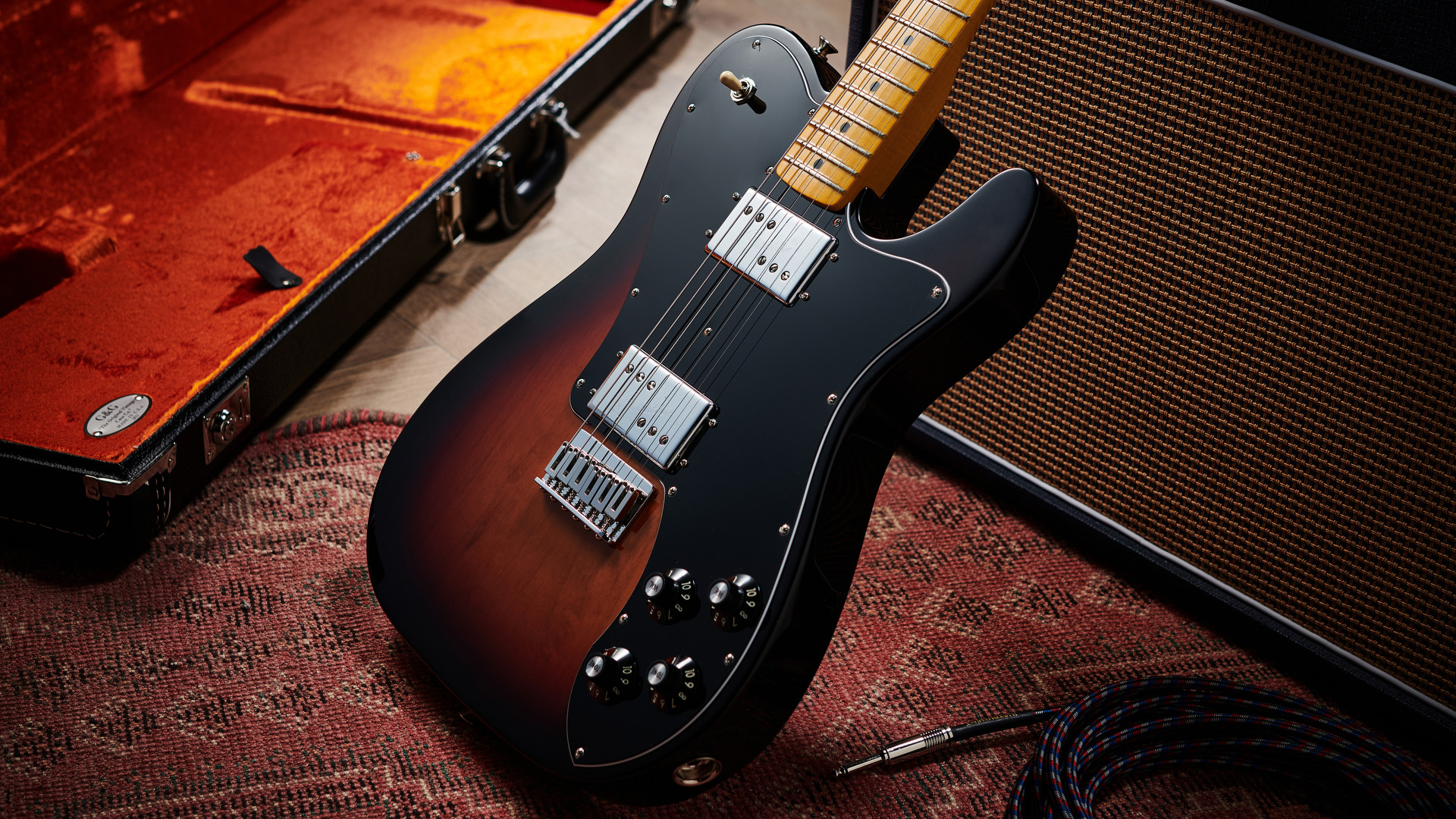MusicRadar Verdict
The first authentic, US-made production Fender Telecaster Deluxe in over 40-years is a hugely likeable guitar that still offers a fresh take on not just the Tele but the humbucker sound too. We hope this is just the start of a Deluxe renaissance.
Pros
- +
The authentic Wide Range humbuckers are wonderful.
- +
A genuinely alternative Tele in appeal.
- +
Period-correct spec.
Cons
- -
The poly finish here is authentic but may turn off some.
- -
Pricey but will we see more affordable Cunife Teles in time?
MusicRadar's got your back
Fender American Vintage II 1975 Telecaster Deluxe: What is it?
Think of a Telecaster: the steely twang, simple two-control layout and that unmistakable headstock. None of that applies here, and yet this is a Telecaster. Perhaps the most overlooked one Fender has ever made.
In true electric guitar spirit then, the Telecaster Deluxe isn't for everyone; a '70s CBS era enlarged Strat headstock, four control setup and dual humbuckers will have Tele purists wincing. But this very alternative styling could be the appeal – might it be built for places a traditional Tele can't go?
Fender's new American Vintage II series gives us the chance to find out properly; the Tele Deluxe as it was intended, and with the pickup spec it was launched with back in 1972. That's important, as we'll find out.
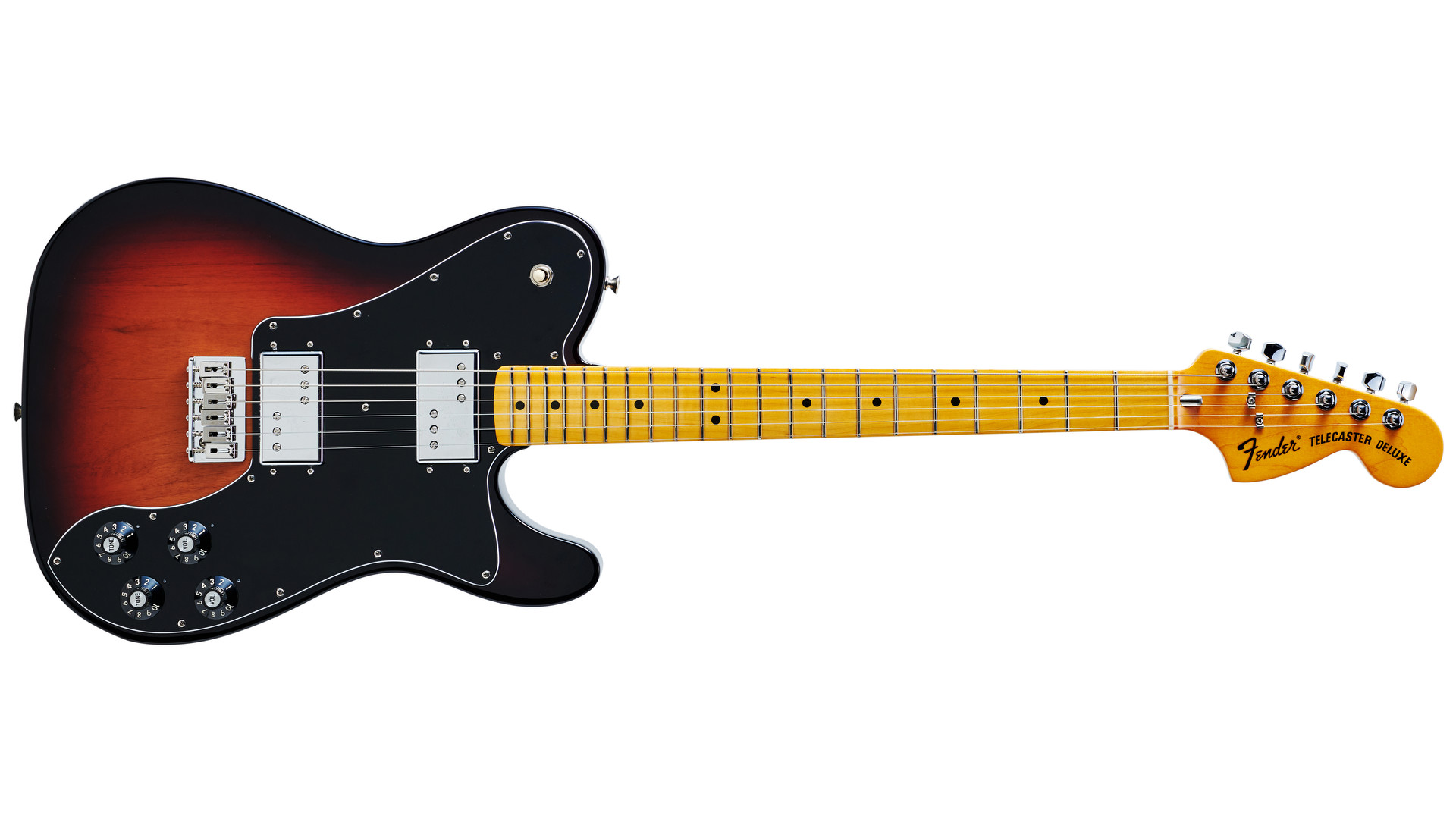
What are Wide Range humbuckers?
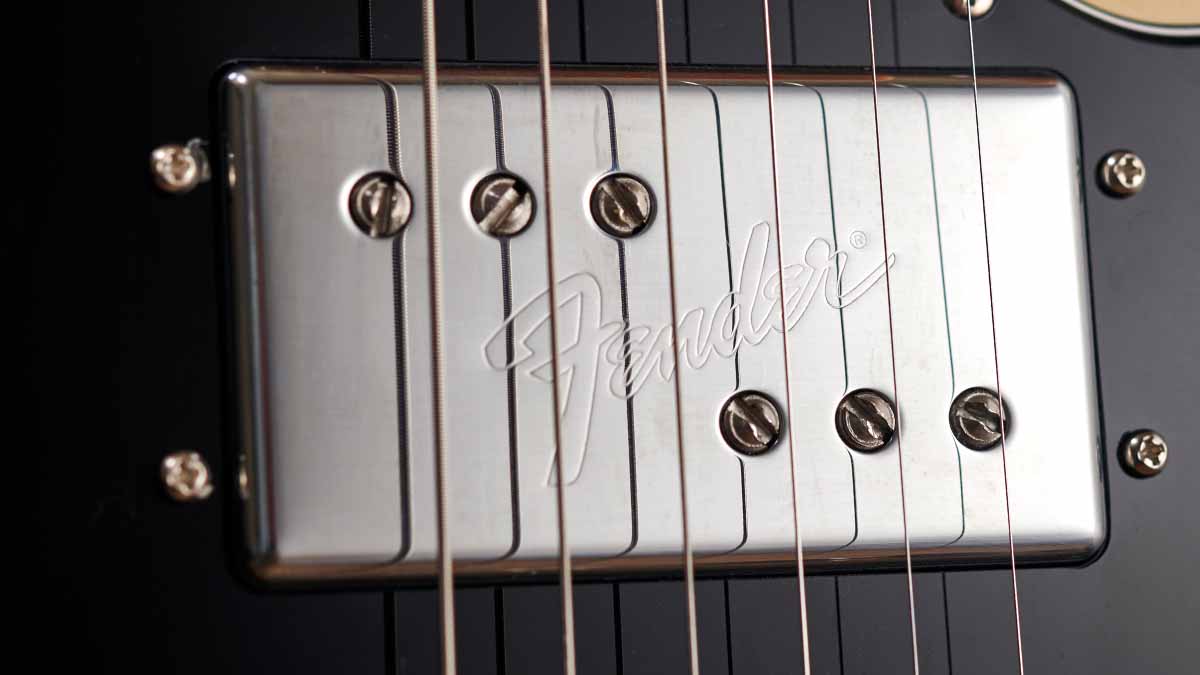
Period-accurate bodies, necks and hardware with 'meticulously voiced, year-specific' Tele pickups are the cornerstones of the American Vintage II series, according to Fender. Vintage spec without the vintage prices, but these are still American-made instruments with pro-level tags attached that represent some of the highest in the Corona-made production lines.
The headline feature for this model, the 1972 Thinline and 1977 Tele Custom in the new series are the Wide Range humbucker pickups with Cunife alloy rod magnets, originally developed in 1970. These were out of production since 1979 and Fender regard them as 'essential' in recreating the sound of the original Deluxe. So with that in mind, one could read every Japanese and Mexican Thinline, Custom and Tele Deluxe reissue using ceramic and alnico magnets since has been a bit of a compromise!
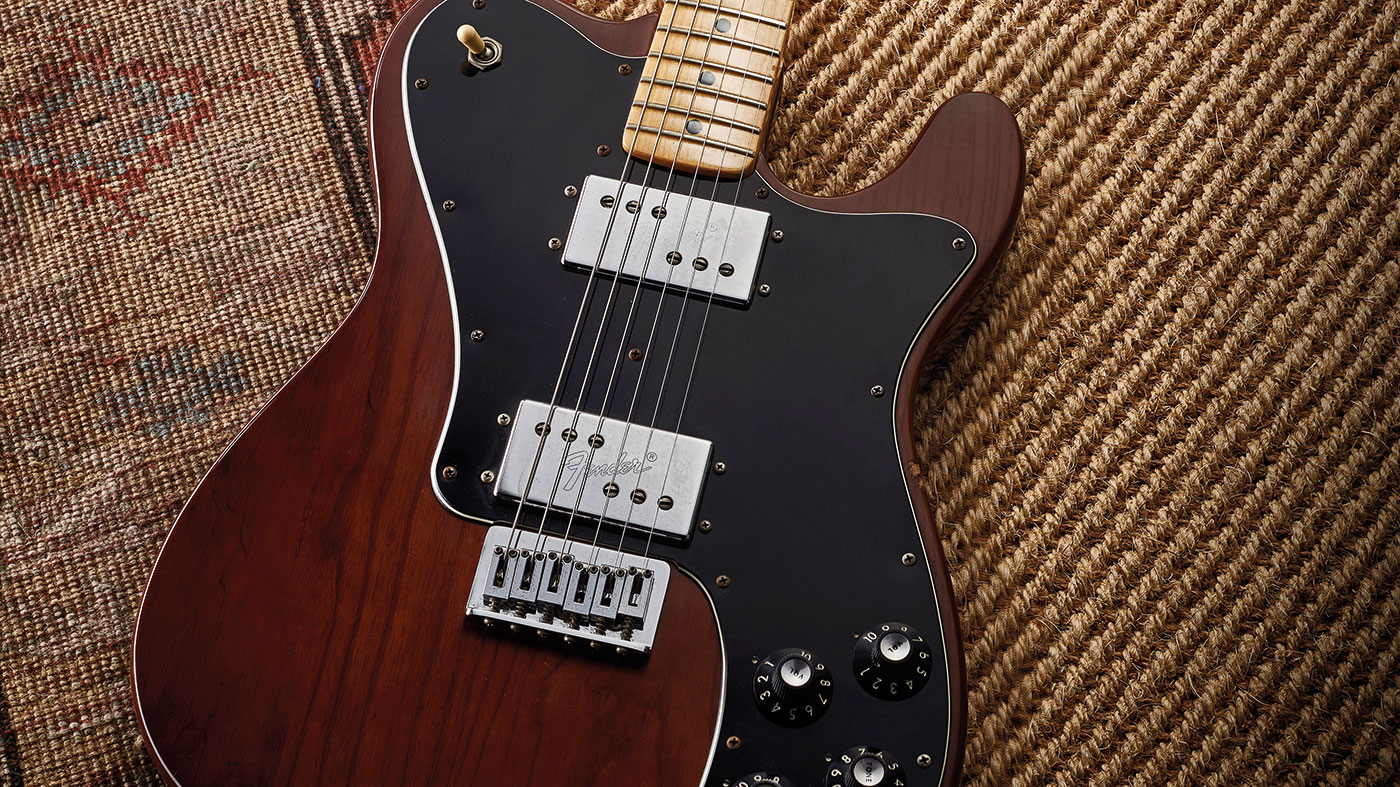
Full disclosure; Cunife pickups actually made their return to production guitars on the 2020 '70s Tele Custom in the recent American Original Series. Before that third-party makers including The Creamery in the UK, have been able to get close to the original sonic blueprint through meticulous design, but now Fender has sourced supply of the Cunife magnets needed to replicate the originals.
The Wide Range humbucker is different to traditional humbucker design in that it uses individual threaded Cunife magnets as opposed to a traditional humbucker 'bar' magnet. These can be adjusted individually to 'EQ' each string, and the result is what some call a fat and doubled single-coil sound.
The result can be kind of best of both worlds result that places these in our holy trinity of underrated and versatile pickups every player needs to try at least once alongside Firebird and Mini humbuckers. But unlike those latter two designs Wide Range inspired pickups are often available in standard humbucker-sized casing so you can retro-fit them without getting the router out. Fender even make Cunife Wide Range humbuckers available now to buy separately if you want the real deal.
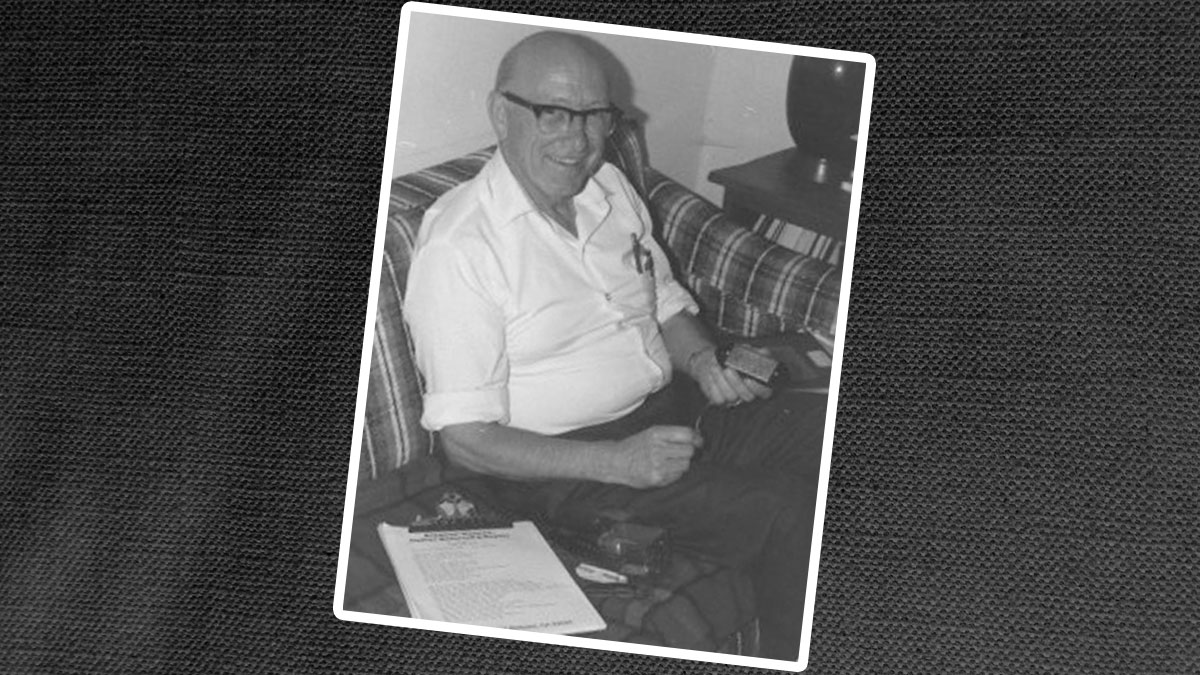
Wide-Range humbuckers have illustrious beginnings too; they were designed by the Godfather Of Humbuckers Seth Lover for Fender in an effort to respond to Gibson's humbuckers. Yes, the PAF that Seth Lover had designed as well!
But turning double agent for Fender actually created a distinct proposition that leaned into Fender's calling cards while bringing rockier girth. The Cunife's Copper/Nickel/Iron was used because it was easier to machine for pole pieces as required.
Extra winds and a larger casing are needed to produce humbucker-level output (12 Cunife alloy magnets, wound to 10,000 turns with 42-gauge polysol wire, producing a high inductance of 4.85H and a DC resistance of 10.6 kilo-ohms were the original specs) and the Wide Range combination can produce impressive clarity and string definition with a brighter, less compressed tonality compared to humbuckers.
As well as the Thinline and Deluxe, the Wide Range humbucker would also feature in the neck of the early '70s iteration of the Telecaster Custom model, and later the Starcaster in 1976. Again, we all need to thank the late, great Seth Lover for helping to create an incredible legacy here.
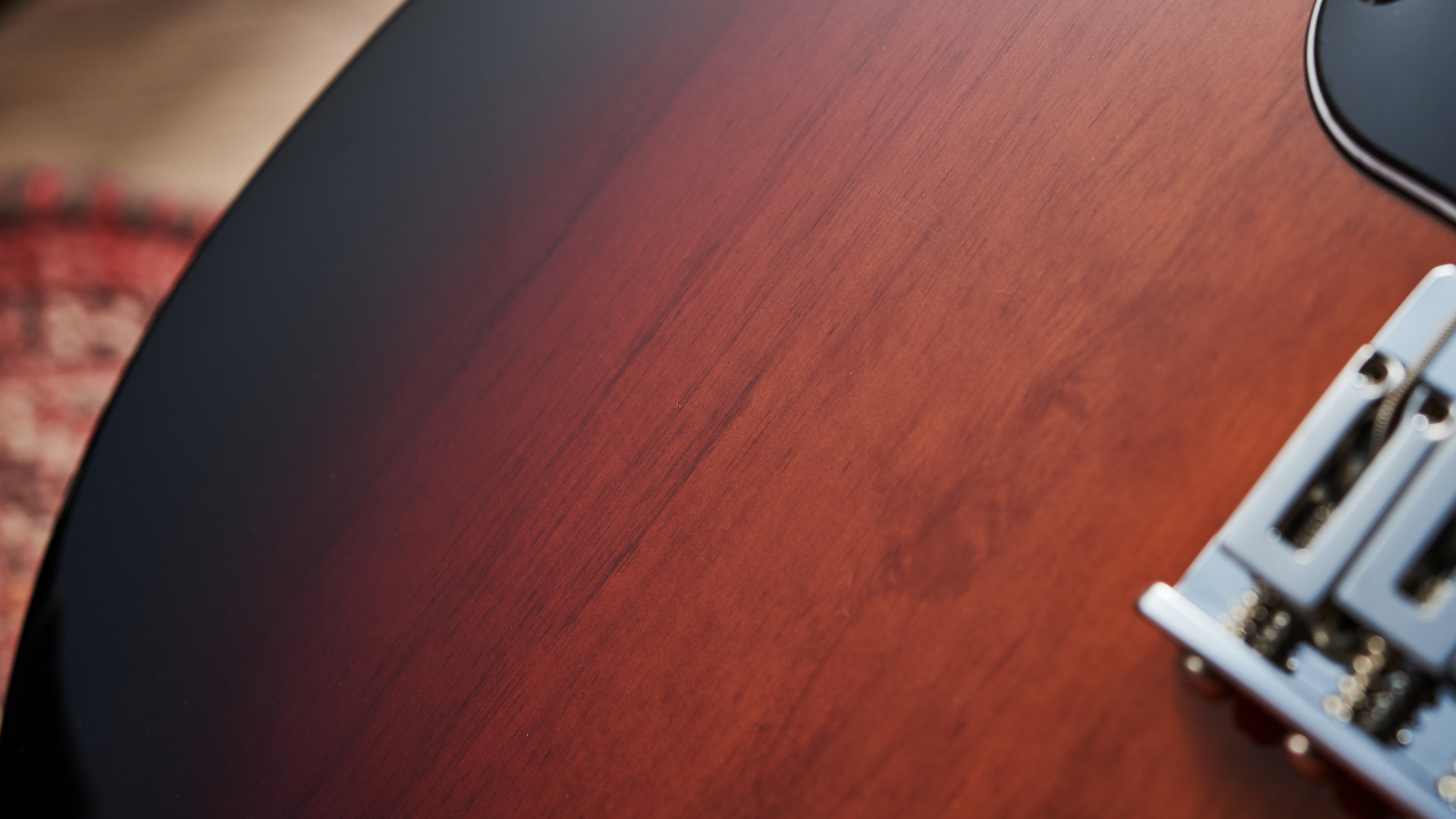
The Tele Deluxe's return to the Fender catalogue in its original form has been a long time coming; even the recent American Professional II model features V Mod II DoubleTap humbucker rather that authentic Wide Range. That range also features a 3-colour Sunburst model like we have here…
Opening the period-correct hardcase with orange lining sets the '70s mood. The build and finish we see here are the standard we'd expect from the Corona factory, with the original's belly cut at the rear of the body present and correct. Indeed, the Deluxe was the first Tele that used the Strat contour and has now been adopted by some contemporary models. We're fans on contoured Teles – all comfort is welcome.
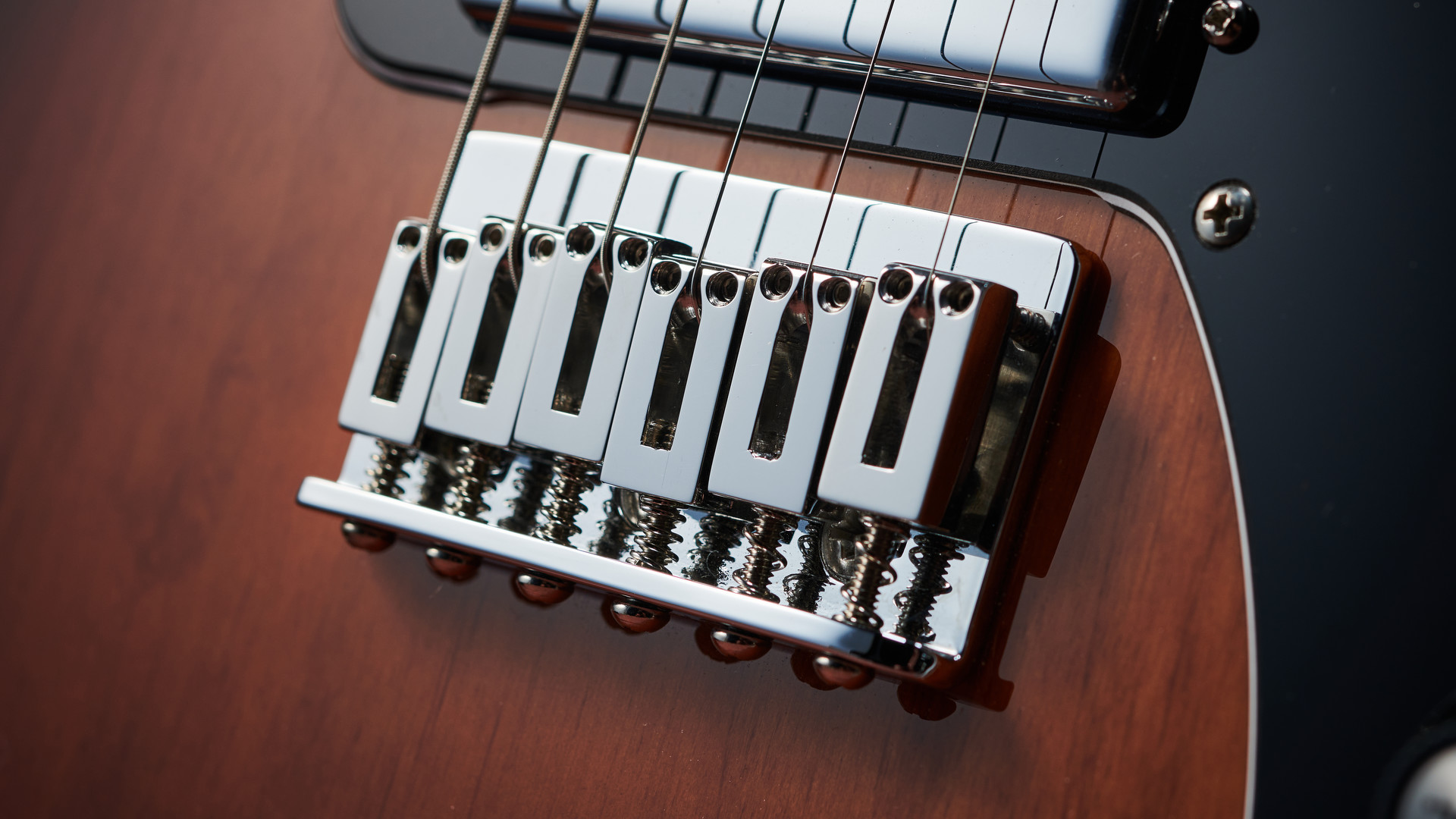
This model also reflects features like the three-bolt neck join that also featured on Strats at the time, along with hardtail Strat-style bridge (with the block saddles we always prefer to fit to on our own Fenders), tone and volume pots for each pickup.
Along with the contour, it's easy to take for granted that block saddles were quite trailblazing at the time – and are still regarded as a fairly modern feature on Teles today.
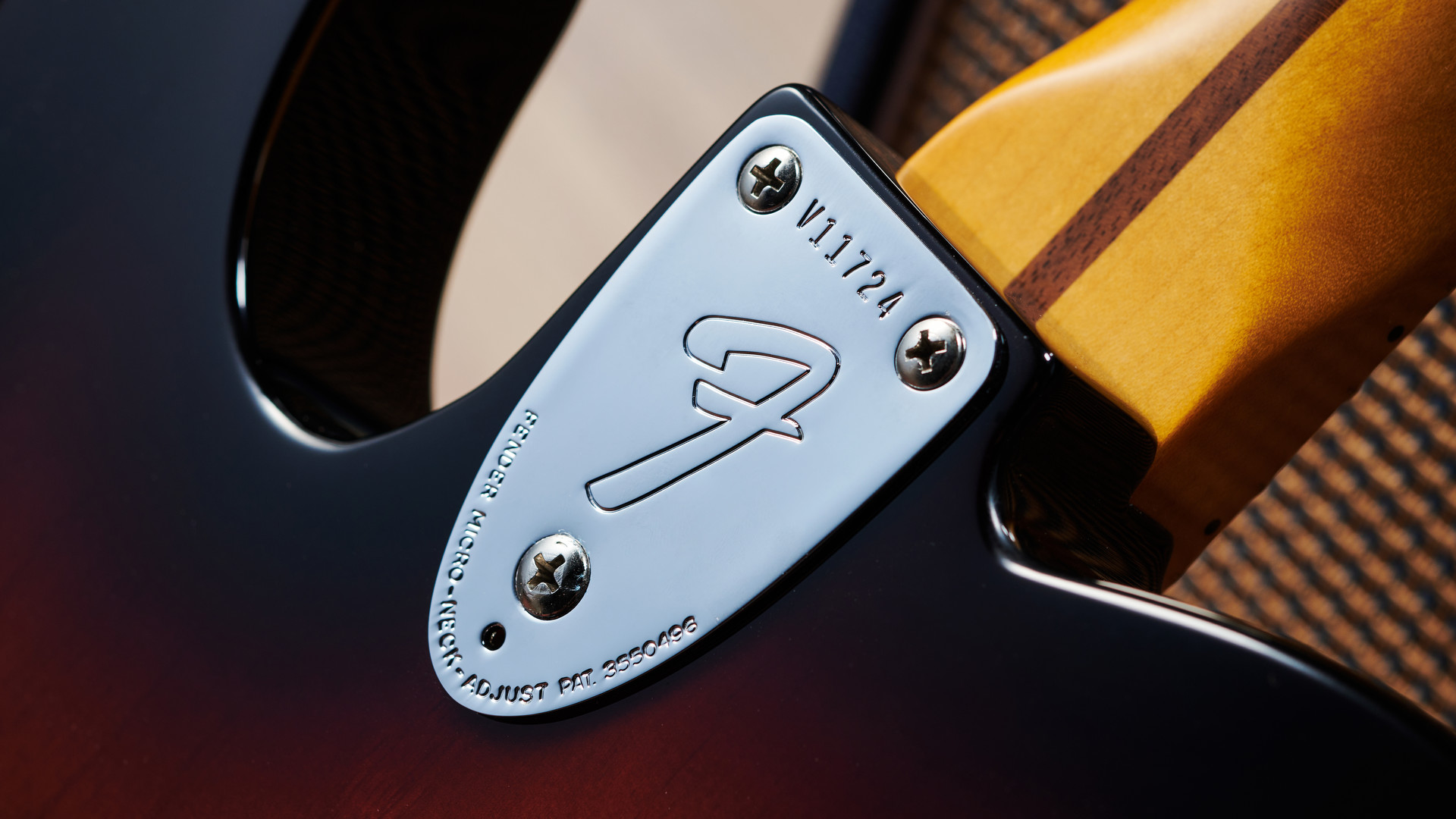
Another detail is Micro Tilt; not a deviation from authenticity but a recognition that the the feature debuted on Fenders in the early '70s, including the Deluxe. It's a great feature we would really like to see on the Mexican Player line too; a leverage mechanism that tweaks the angle between guitar neck and body to really hone in on optimal setup.
The bullet truss rod adjustment at the top, CBS-era Strat headstock… this is the American period-correct reissue that the Deluxe fans have been waiting for. The rest of you may need more convincing, so let's find out how it feels and plays.
Fender American Vintage II 1975 Telecaster Deluxe: Performance and verdict
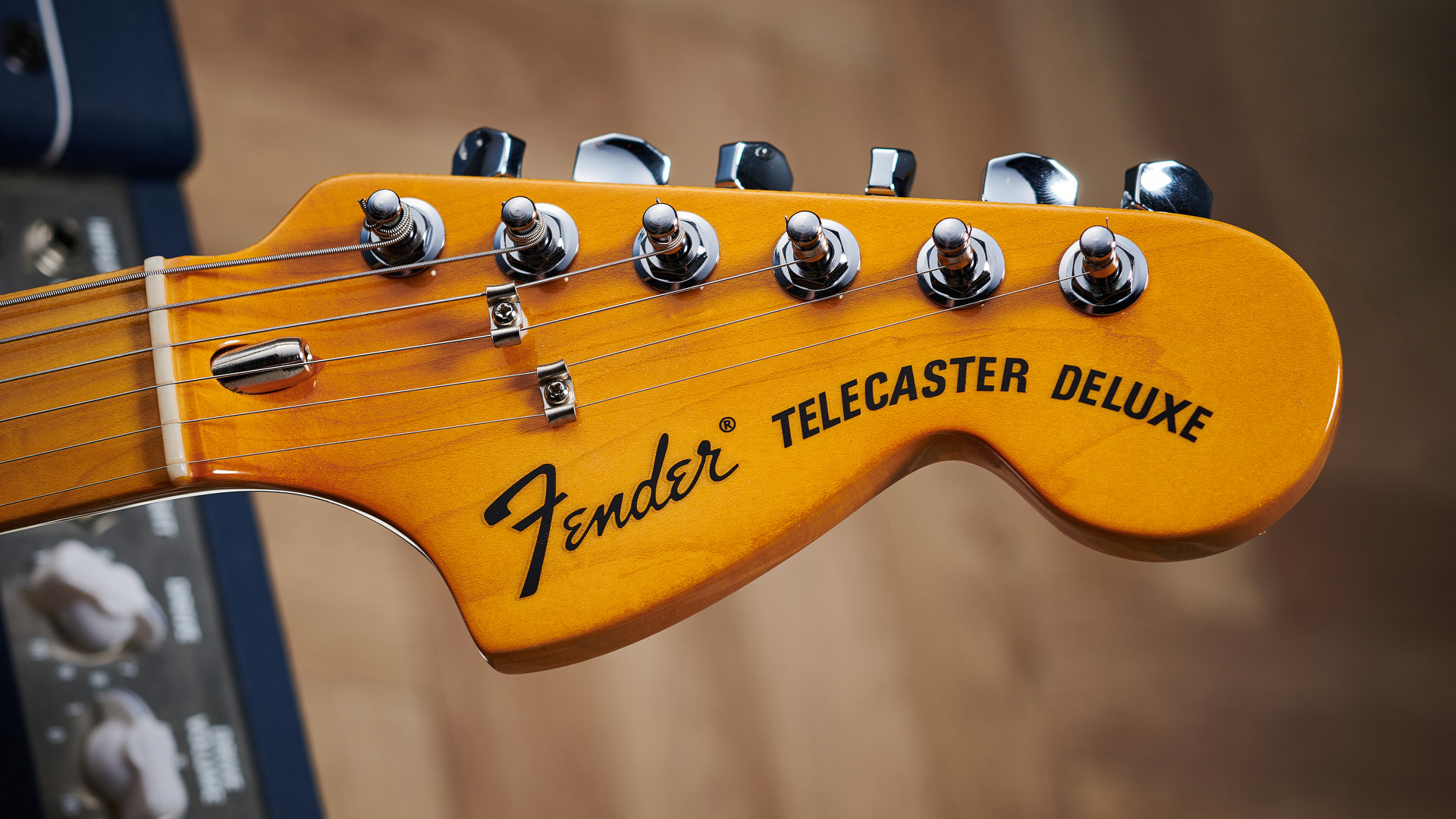
A Fender with humbuckers, four controls and reputation for being weighty? Les Paul fans form an orderly queue! There's no doubt Gibson players will be more familiar with the control layout but that neck is all Fender. And the weight, yes it's over our usual standard Tele preference at 8.2lbs but it feels balanced rather than bottom of the body-heavy like an alder anchor. And the radius definitely feels curvier than our other 9.5-inch maple 'boards, but it feels great with a low action (.05 on the low E and .04 on the high E) with the kind of springy tension that's immediately appealing.
The dark maple neck certainly looks the vintage part with the period correct gloss intact. This '1975 C-shape' here really feels like the classic appeal of a Fender C-carve; it's meatier than the 'modern' C. Fender are sticking to the blueprint throughout and again, the setup and fret work are of the ready-to-go standard we'd expect from a US Fender. So the action can go pretty low like it is here without getting buzzy or muted.
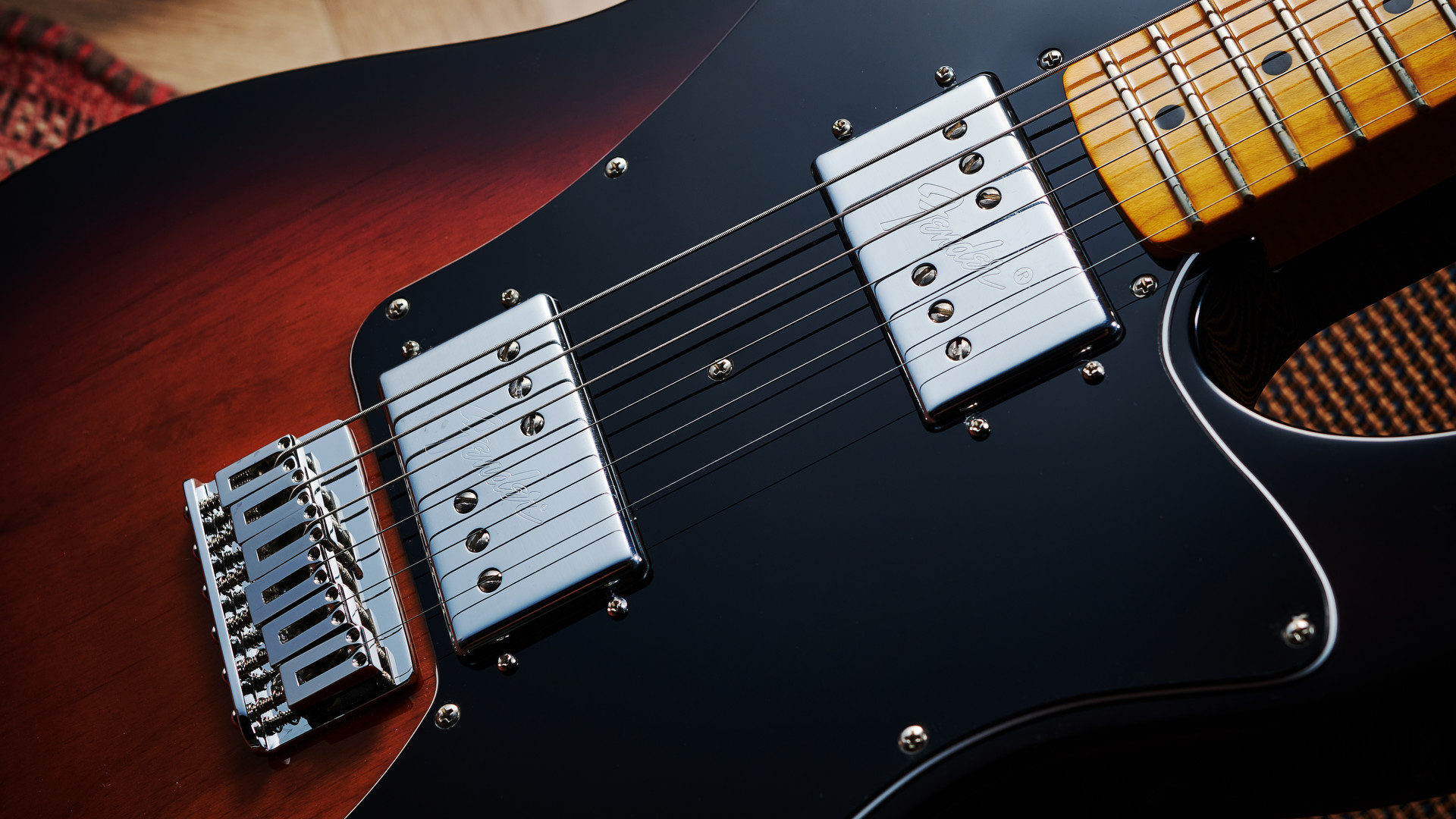
We're going to come right out and say it now; we found these Cunife Wide Range pickups up there with the best humbuckers we've ever tried
We once installed a third party Wide Range humbucker in our own Tele's neck position and were very pleased with the results, but have never experienced the truly authentic full-fat Fender experience.
We're not fans of the Fender logos across the cases, but again it's authenticity (just like the fact this has a poly finish like they did 1975 and not nitro). And while it's tempting to call these the perfect transition humbucker from single-coils, but it' kind of underselling them. There's a lot to consider here between the three positions.
Wide Range is an accurate summary as it turns out; a full-bodied balance across the spectrum that allows the strings to ring out with defined character in chords, but with low end muscle when required.
Coming from a PAF-style humbucker, the difference isn't as dramatic as the steely bounce and brash brightness of a Firebird bridge pickup, but it is bright, and it's clearer than a PAF for us. If you like your driven chords ringing, you need to try these. The sense of clarity is hugely impressive. We're going to come right out and say it now; we found these Cunife Wide Range pickups up there with the best humbuckers we've ever tried.
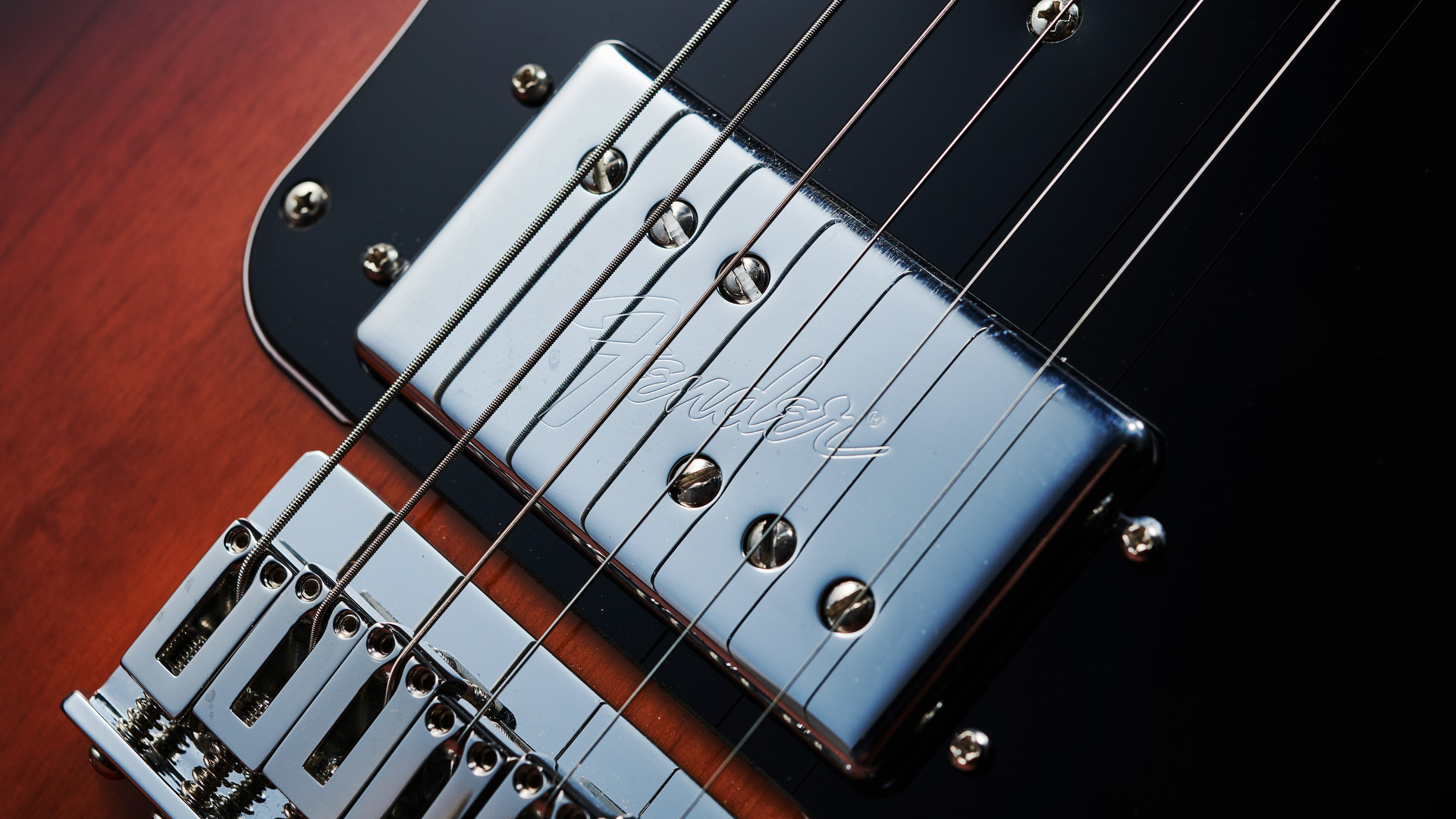
There's no wooly baggage to be found in the neck position as we run it through some overdrives and distortions into a Fender Deluxe Reverb; more a rounded clarity that encourages more experimentation with the tone control and makes perfect sense paired with a single-coil neck pickup in a Keef-style Custom. Here though it feels more fully realised with the four-control setup. For instance, dial back the gain from the neck's volume and then switch to the bridge for a dynamic step up.
Our hope is we'll see more affordable Cunife-spec Teles filtering down the Fender lines
Between them is a middle position that offers warmer clean jangle aplenty, but while adding an airier alternate voice when driven. It's a great tool to wield in a band, and you can see why alternative rock guitarists like Thom Yorke, Graham Coxon and Chris Shiflett have been drawn to Tele Deluxes. But only Shiflett has stuck with them, along with gifted young bluesman Christone 'Kingfish' Ingram, who now has his own signature model. Perhaps that's the fate of this model; Fender's dark horse that thrives under the radar.
That may be so, but we at last have a true representation of the original Telecaster Deluxe back in the Fender catalogue and the chance for it to reach more players. Of course, they have to be able to afford the entry fee first, and that is high even by current American production standards. Our hope is we'll see more affordable Cunife-spec Teles filtering down the Fender lines so more of us can enjoy these kinds of tones.
MusicRadar Verdict: The first authentic, US-made production Fender Telecaster Deluxe in over 40-years a hugely likeable guitar that still offers a fresh take on not just the Tele but the humbucker sound too. We hope this is just the start of a Deluxe renaissance.
Fender American Vintage II Telecaster Deluxe: Hands-on demos
Fender
Peach Guitars
Walt Grace Vintage
Andertons
Fender American Vintage II 1975 Telecaster Deluxe: Specifications

- TYPE: Solid-body electric, made in USA
- BODY: Alder, gloss polyurethane finish
- NECK: Maple, bolt-on, '1975 C-shape' profile
- SCALE: 25.5”
- FINGERBOARD: Maple, 9.5 radius
- FRETS: 21, medium jumbo
- ELECTRICS: 2 x Authentic CuNiFe Wide Range humbuckers
- CONTROLS: Three-way selector toggle switch, 2 x tone, 2 x volume
- HARDWARE: Pure Vintage Tele Deluxe tuners, Bone nut, Pure Vintage six-saddle string-through body hardtail with stainless steel block saddles, chrome bridge cover included in case, three-bolt 'F' stamped with Micro-Tilt
- WEIGHT: 8.2lbs / 3.7kg
- CASE: Vintage-style black hard case
- FINISHES: 3-Color Sunburst [as reviewed], Black, Mocha
- CONTACT: Fender

Rob is the Reviews Editor for GuitarWorld.com and MusicRadar guitars, so spends most of his waking hours (and beyond) thinking about and trying the latest gear while making sure our reviews team is giving you thorough and honest tests of it. He's worked for guitar mags and sites as a writer and editor for nearly 20 years but still winces at the thought of restringing anything with a Floyd Rose.
“Every note counts and fits perfectly”: Kirk Hammett names his best Metallica solo – and no, it’s not One or Master Of Puppets
Ranked: Bon Iver's albums, from Sable, Fable to For Emma, Forever Ago
“Its mission is simple: unleash the power of any amplifier or line-level source without compromise”: Two Notes promises a “watershed” in tube amp control with the Torpedo Reload II
